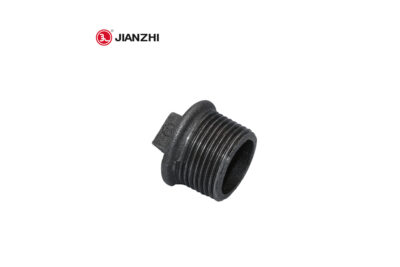Pipe fittings are components used to connect and control the flow of fluids or gases in a piping system. They are essential for joining pipes of different sizes and shapes, changing the direction of flow, and regulating the flow rate and pressure.
Here are some common types of pipe fittings:
Coupling fittings: Coupling fittings are used to join two pipes together of the same size and material. They are typically threaded or slip-on and can be made of various materials, including PVC, copper, and steel.
Elbow fittings: Elbow fittings are used to change the direction of flow in a piping system. They come in various angles, including 45 and 90 degrees, and can be made of various materials, including brass, stainless steel, and PVC.
Tee fittings: Tee fittings are used to join three pipes together at a T-shaped intersection. They come in various angles, including 90 and 45 degrees, and can be made of various materials, including PVC, copper, and steel.
Reducer fittings: Reducer fittings are used to connect pipes of different sizes together. They come in various types, including concentric and eccentric reducers, and can be made of various materials, including PVC, brass, and stainless steel.
Flange fittings: Flange fittings are used to connect pipes and valves together in a piping system. They consist of a flange and a gasket and can be made of various materials, including carbon steel, stainless steel, and PVC.
Union fittings: Union fittings are used to connect two pipes together and allow for easy disassembly and maintenance. They consist of two threaded ends and a nut that can be tightened or loosened to connect or disconnect the pipes.
There are many other types of pipe fittings available, including compression, push-to-connect, and soldered fittings, each with their own unique features and benefits. It is important to select the appropriate type of fitting for the specific application and to ensure that the fitting is properly installed and secured to prevent leaks or other issues.
Selecting the appropriate type of fitting for a specific application can depend on various factors such as the type of fluid or gas being transported, wholesale pipe fittings the temperature and pressure of the system, the size and material of the pipes, and the required flow rate and direction.
Here are some steps to help determine the appropriate type of fitting for your application:
Determine the pipe size and material: Determine the size and material of the pipes that will be used in the system. This information will help to determine the type of fitting that is compatible with the pipes.
Consider the type of fluid or gas being transported: Consider the type of fluid or gas that will be transported in the system. Some fluids or gases may require specific materials or types of fittings to prevent corrosion or contamination.
Determine the temperature and pressure of the system: Determine the temperature and pressure of the system to ensure that the fitting is rated for the appropriate temperature and pressure range.
Consider the required flow rate and direction: Consider the required flow rate and direction of the system to determine the type of fitting that is best suited for the application. For example, if a change in direction is required, an elbow fitting may be necessary.
Consult with a professional: If you are unsure about the appropriate type of fitting for your application, consult with a professional or the manufacturer of the system to ensure that the correct fitting is selected.
It is important to select the appropriate type of fitting for the specific application to ensure that the system operates efficiently and safely. Using the wrong type of fitting can result in leaks, damage to the system, and potential safety hazards.
